How Do I Make My Dog Drink Water: Top Tips & Tricks
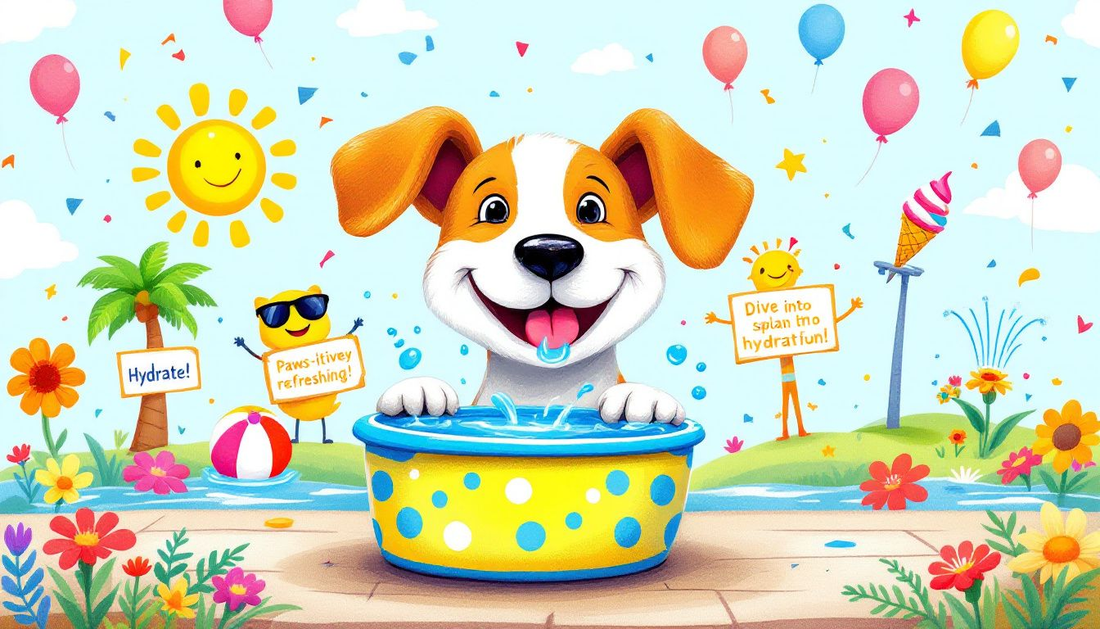
How Do I Make My Dog Drink Water: Top Tips & Tricks
Are you worried because your dog isn’t drinking enough water? Ensuring your dog stays hydrated is crucial for their health, but it can be challenging if they’re reluctant to drink. In this article, we’ll provide practical tips on how do I make my dog drink water. From adding flavors to changing bowls, you’ll find several effective strategies to encourage regular drinking and keep your dog hydrated.
Key Takeaways
- Dogs generally need about 1 ounce of water per pound of body weight each day, with factors like activity level and diet influencing this requirement.
- Signs of dehydration in dogs include dry gums, sunken eyes, and lethargy, with skin elasticity tests aiding in early detection.
-
Practical strategies to encourage dogs to drink more water include providing fresh water, adding flavors, using wet food, and utilizing pet fountains.
Understanding Your Dog's Water Needs
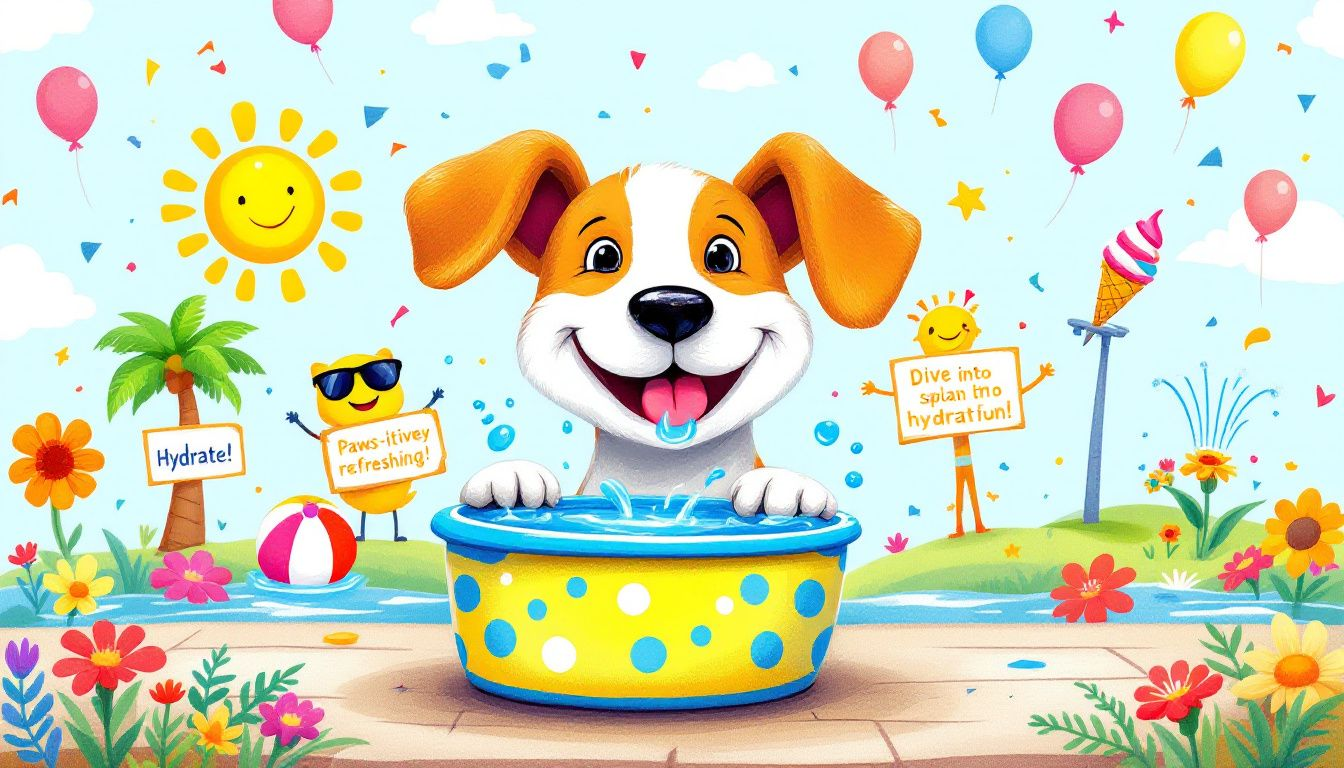
On average, dogs should drink about 1 ounce of dog drink for every pound of their body weight each day.
However, several factors can influence this guideline:
- Active dogs require more water daily to stay hydrated.
- Dogs living in hotter climates need increased water intake.
- Lactating females also require more water.
-
A dog’s diet can affect their water intake; dogs consuming dry kibble might need to drink more compared to those fed wet food.
Recognizing these factors will help keep your dog properly hydrated. Age also plays a role in determining water requirements, with puppies and older dogs having different hydration needs. Being aware of your dog’s water requirements allows for better monitoring of their intake.
Signs Your Dog Might Be Dehydrated
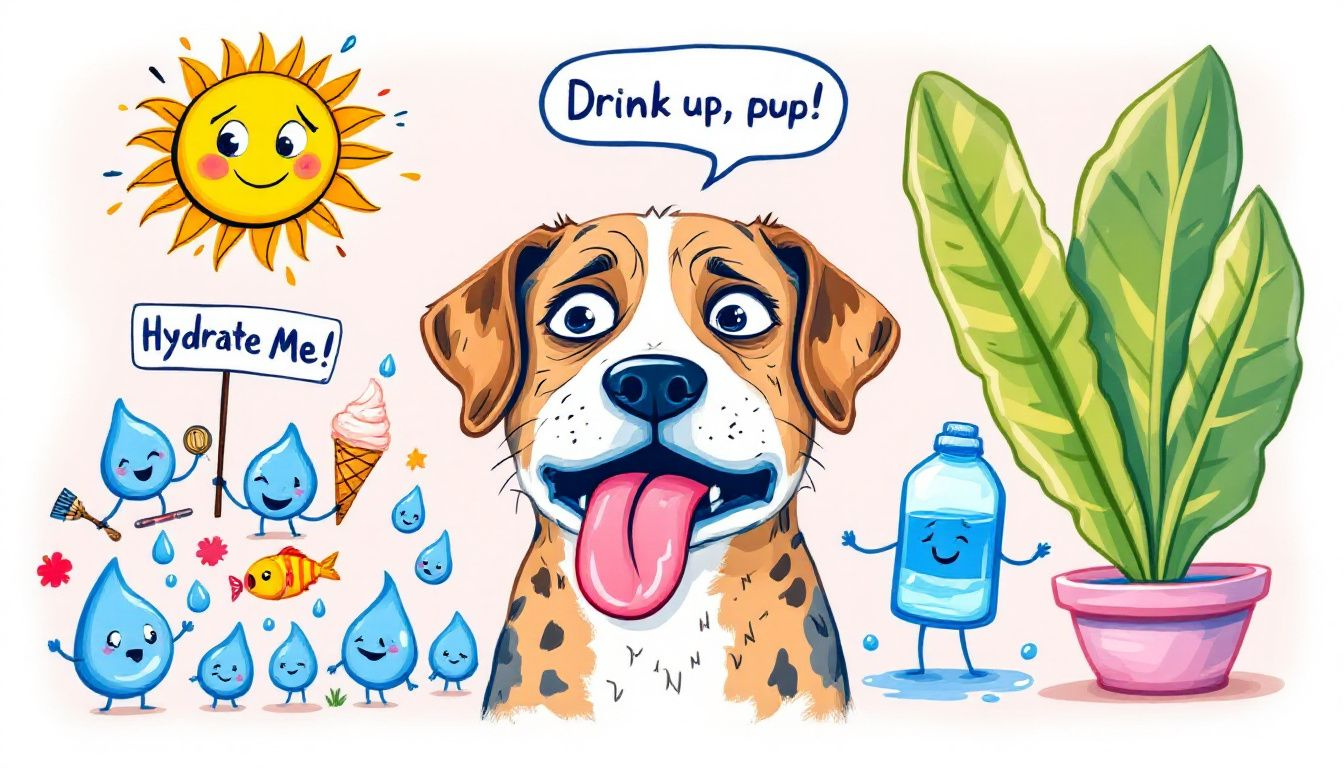
Dehydration in dogs can manifest in several ways. Dry gums, sunken eyes, and lethargy are telltale signs that your dog might be dehydrated. If you notice that your dog’s gums are sticky or their dog’s mouth is dry, it’s a strong indicator that they aren’t getting enough water. A sick dog may exhibit these symptoms as well.
Another useful test for dehydration is skin elasticity. Gently pinch and lift the skin on the back of your dog’s neck; if it doesn’t quickly return to its original position, your dog might be dehydrated. Keeping an eye on these signs enables early detection of dehydration, preventing more serious health problems.
Practical Tips to Encourage Your Dog to Drink More Water
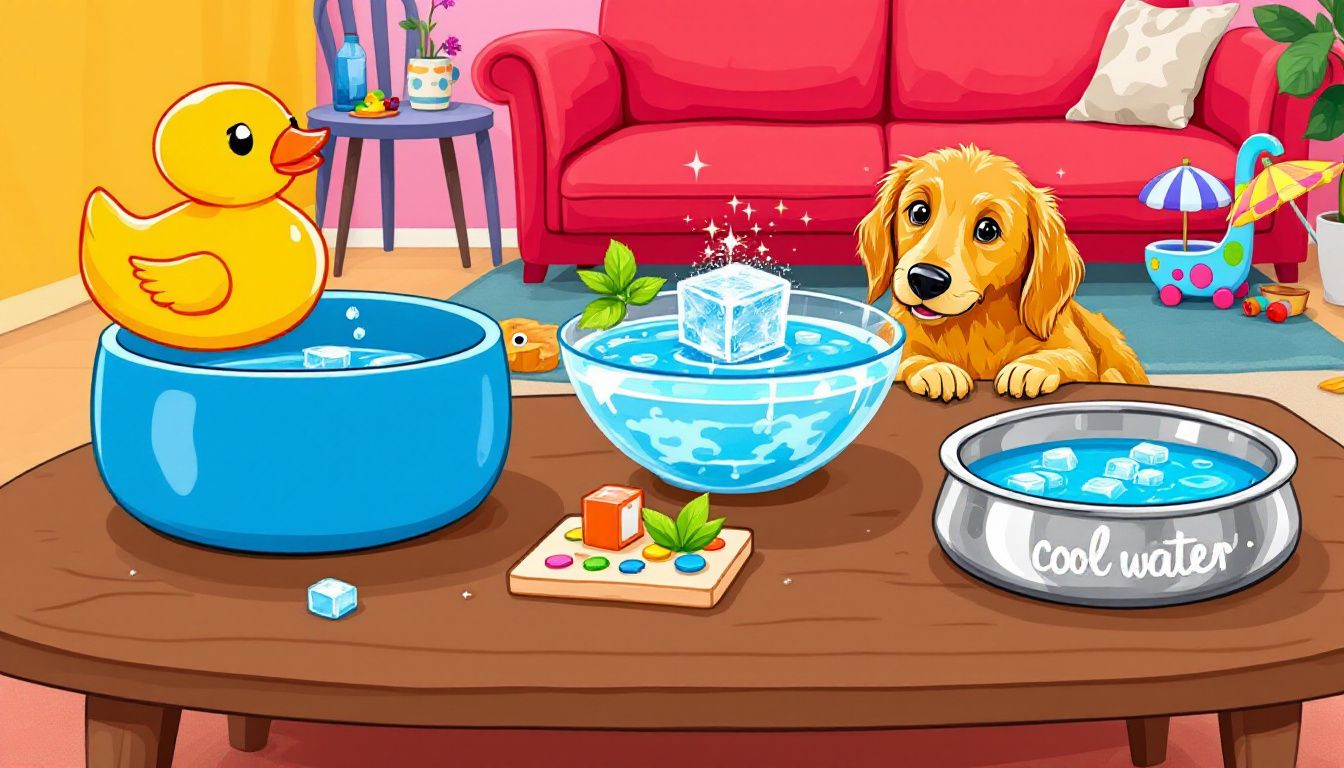
Keeping your dog hydrated doesn’t have to be a daunting task. Making small adjustments, such as keeping fresh water available, placing several water bowls around the house, and adding flavors using LYX hydration mix for dogs, can significantly help.
These strategies can entice even the pickiest dog to drink more water regularly.
Keep Water Fresh and Clean
Maintaining fresh and clean water is crucial for your dog’s well-being. Cleaning the bowl and changing the water frequently prevents harmful bacteria and makes it more appealing for your dog. Even minor changes in the taste or smell of water can deter dogs from drinking, as they can be quite particular.
Using stainless steel or ceramic bowls can help keep the water tasting fresh, as these materials don’t absorb odors like plastic does. Some dogs might even prefer filtered or bottled water if they’re particularly sensitive to the taste of tap water.
Multiple Water Bowls Around the House
Placing multiple water bowls in different areas of your home can help promote hydration for your dog. This method encourages more frequent drinking throughout the day. It ensures water is always accessible, regardless of where your dog is resting or playing. Spill-proof bowls or pet fountains can also be beneficial as they provide a steady supply of fresh water and reduce the frequency of refills.
If your dog has developed a negative association with a specific water bowl or location, try changing the bowl’s location or switching to a different type of bowl to see if that helps.
Add Flavor to Water
A touch of flavor can sometimes make a big difference. Adding low-sodium chicken broth or unsalted tuna water to your dog’s water bowl can make drinking water more enticing. Flavor additions can mask unpleasant tastes and encourage more regular drinking. LYX hydration mix for dogs is made to encourage your dog to drink more water.
Using Wet Food and Treats to Boost Hydration
Integrating wet food and hydrating treats into your dog’s diet effectively boosts their food and water intake. Wet food naturally contains more moisture, and adding water to dry food can help as well.
Treats like frozen broth ice cubes provide both hydration and a tasty snack.
Incorporate Wet Food into Diet
Wet dog food typically contains 75%-80% moisture, making it an excellent addition to your dog’s food for boosting hydration. This high moisture content helps ensure your dog is getting enough water, which is crucial for their overall health.
Adding wet food to your dog’s meals can significantly improve their hydration, especially if they aren’t drinking enough on their own.
Add Water to Dry Food
Mixing water with dry kibble is an easy and effective way to boost your dog’s daily water intake. Start by adding a small amount of water and gradually increase it to find the right balance that your dog enjoys.
This method not only increases hydration but also makes dry food more enticing, encouraging your dog to eat and drink more. LYX hydration mix for dogs can be mixed with water and used as a food topper for your dog.
Offer Frozen Treats
Low-sodium broth frozen treats can be a fun and hydrating snack, particularly on hot days. They offer a refreshing way to keep your dog hydrated and provide a tasty reward. Try mixing LYX with water and freezing into ice cubes for a frozen hydration treat!
Innovative Hydration Solutions
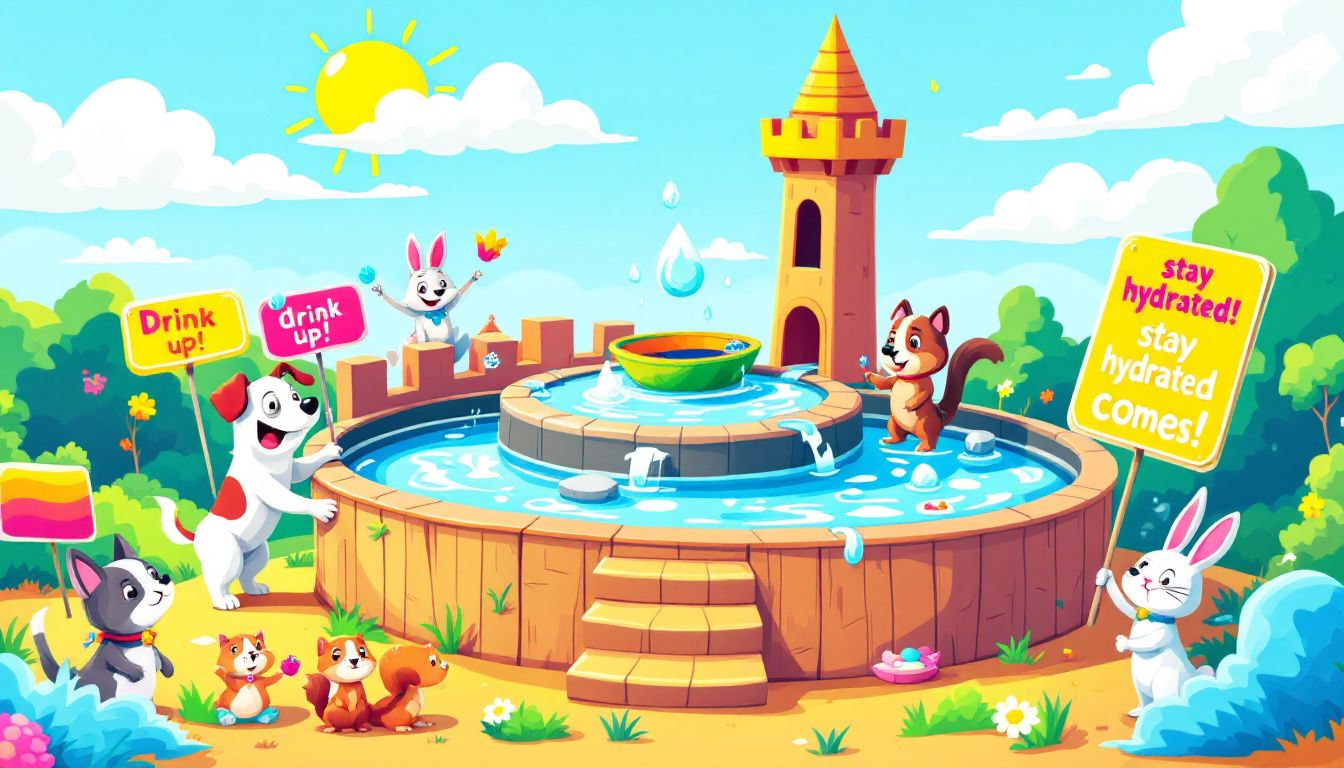
Innovative tools like pet fountains and electrolyte solutions can help keep your dog hydrated. These options can make drinking water more appealing, supporting hydration particularly in hot climates or post-exercise. LYX is the perfect hydration innovation based on research with military dogs to keep them hydrated!
Pet Fountains
Pet fountains encourage dogs to drink more water by offering running water, which many dogs find more appealing than still water. The sound and movement can stimulate their interest, leading to increased water intake.
Most pet fountains use filtered water, ensuring constant access to clean, fresh water. This can be particularly beneficial for dogs that are sensitive to the taste of tap water.
Electrolyte Solutions
Electrolyte solutions like LYX can help maintain hydration, especially in hot weather or during intense activities. These solutions are designed specifically for dogs and should be used as directed by a veterinarian.
Addressing Health Issues That Affect Drinking Habits
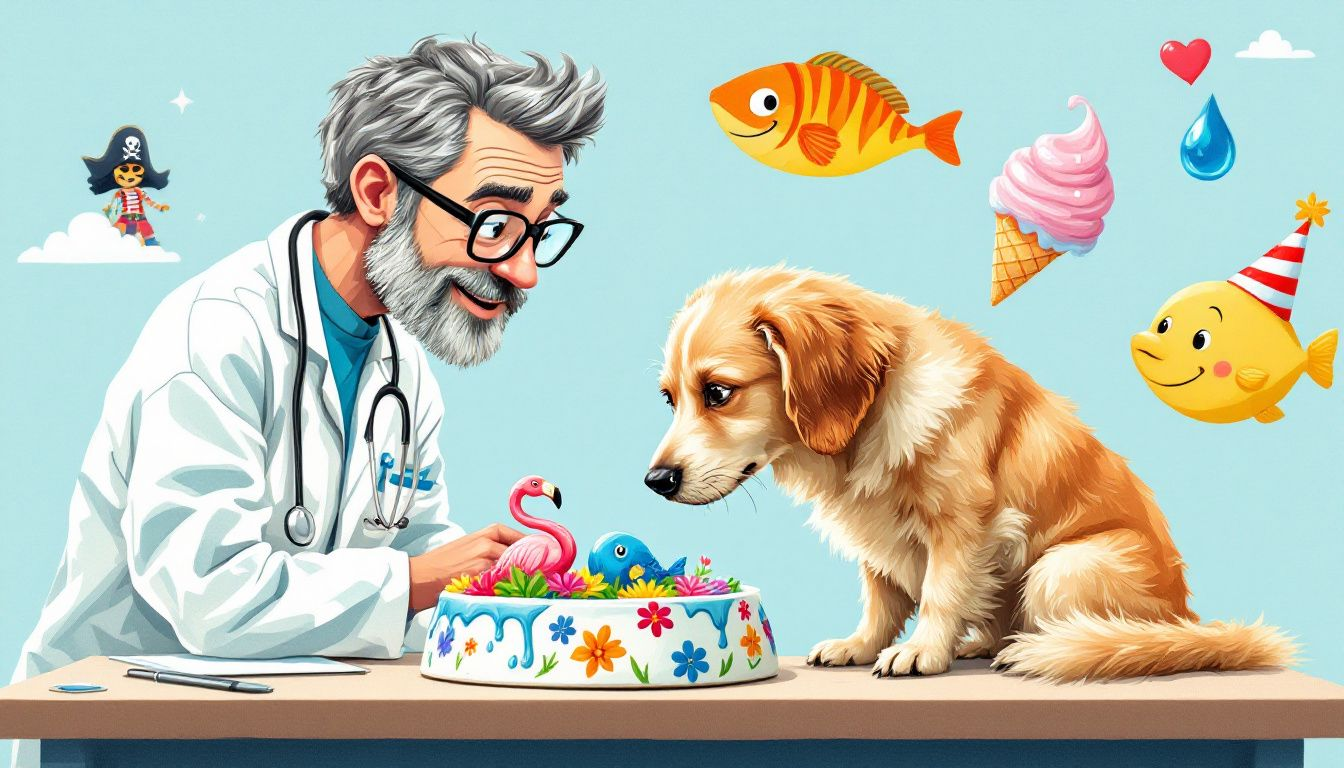
Health issues like kidney disease and urinary tract infections can significantly impact a dog’s water intake. Chronic conditions, such as kidney disease, are common in older dogs and can lead to reduced water consumption due to discomfort or illness.
Persistent refusal to drink water warrants a consultation with a veterinarian to identify any underlying health issues. Seek immediate veterinary attention if your dog won’t drink water for more than a day, as prolonged dehydration can cause severe health issues.
Behavioral Factors Influencing Water Intake
Anxiety and stress can also influence a dog’s drinking habits. Alterations in environment, routine, or water source can make a dog hesitant to drink. Using a familiar water bowl and maintaining a consistent, comfortable environment can alleviate such issues.
A secure and calming atmosphere can encourage more water intake, especially in anxious or stressed dogs.
Monitoring Water Intake
Keeping track of your dog’s water intake is crucial for ensuring they stay hydrated. A 24-hour water intake test can help you monitor your dog’s daily water consumption. Recording their intake over a few days can provide a clear picture of their average consumption.
For accurate monitoring, limit your dog’s access to one dog’s water bowl and use a measuring jug to determine the amount consumed each time the bowl is refilled.
Summary
Ensuring your dog stays hydrated is vital for their health and well-being. By understanding their water needs, recognizing signs of dehydration, and implementing practical tips, you can help your dog drink more water and stay healthy.
Remember, hydration is key to your dog’s overall health. Keep their water fresh and accessible, and don’t hesitate to consult a vet if you have concerns about their water intake.
Frequently Asked Questions
How much water should my dog drink daily?
Dogs generally need about 1 ounce of water per pound of their body weight daily. Ensure your dog stays hydrated for optimal health.
What are the signs of dehydration in dogs?
Signs of dehydration in dogs include dry gums, sunken eyes, lethargy, and poor skin elasticity. It's crucial to monitor these symptoms to ensure your dog's health.
How can I encourage my dog to drink more water?
To encourage your dog to drink more water, keep it fresh and place multiple bowls around your home. You can also enhance the appeal by adding flavors like low-sodium broth from LYX.
Can wet food help with my dog's hydration?
Yes, wet food can effectively boost your dog's hydration due to its high moisture content. Incorporating it into their diet is a great way to help keep them hydrated.
When should I consult a vet about my dog's water intake?
You should consult a vet immediately if your dog refuses to drink water for more than a day or exhibits persistent signs of dehydration. Timely intervention is crucial for your dog's health.
